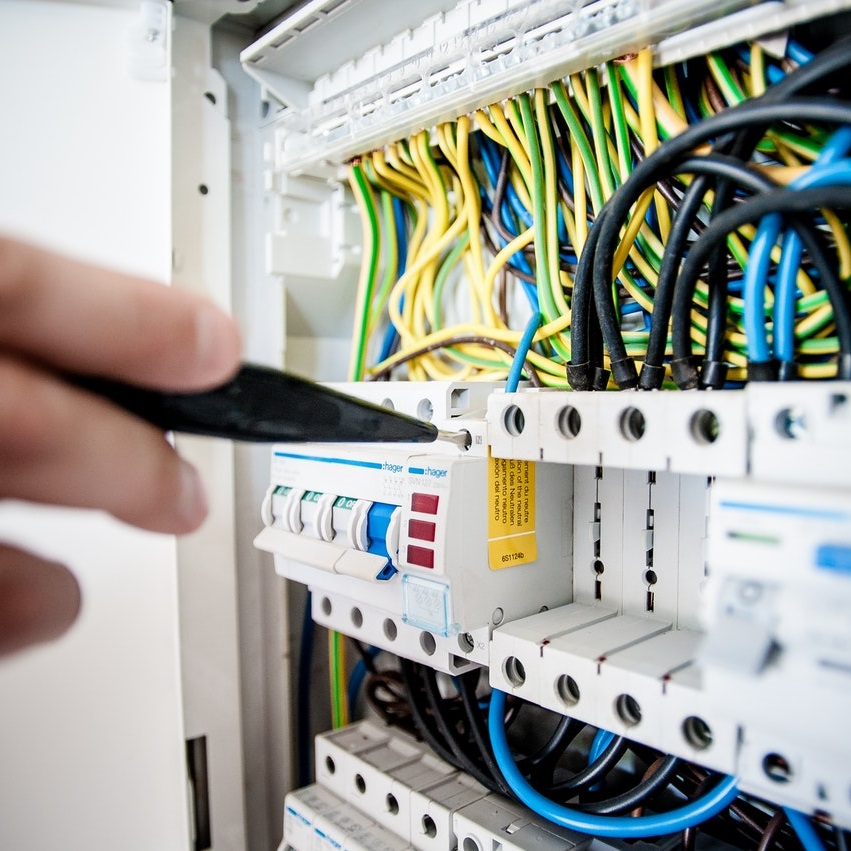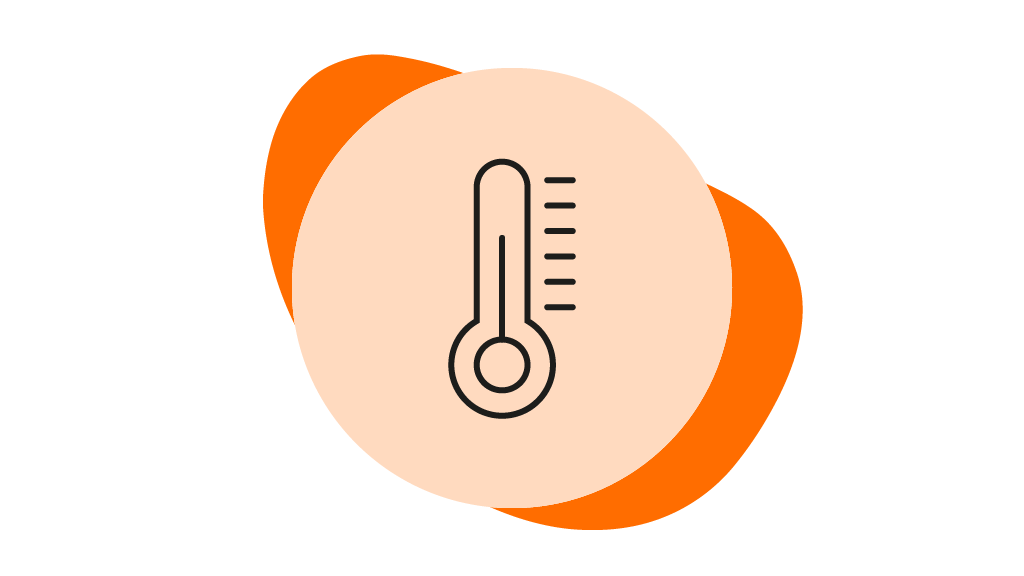

Last updated: February 2023
With the 2025 “boiler ban” approaching, it’s no surprise that more and more of us are opting for sustainable heating solutions. One of these options is electric radiators, an increasingly popular low-carbon alternative. Not only are they 100% efficient at point of use, but they offer excellent controllability and fast, comfortable warmth. Before making the eco-friendly switch, it’s worth considering just how much electricity is needed to run these appliances, and how this could impact your heating bills.
What is a 'lot' of electricity?


Defining ‘how much is too much’ depends on several factors, such as how many people live in your house and the number of appliances you use. These variants that mean ‘a lot’ of electricity for one household could be ‘a little’ for another.
Depending on your existing heating system, switching to electric radiators may increase your electricity usage. However, with this type of eco-friendly warmth, every watt of energy drawn from the wall is converted into usable heat. This means that nothing is wasted, making electric radiators a highly efficient choice. You could even go one step further and use them in combination with renewable energy sources, such as wind and solar power. This would make them completely efficient, from start to finish. Either way, you can be rest assured that all the energy you’re using, whether it’s ‘a little’ or ‘a lot’, will heat your home effectively.
How much electricity does an electric radiator use?
A simple calculation can help you work out how much energy an appliance needs hourly to run. With your room measurements at the ready, our handy calculator will work out which size radiator and wattage best suits your needs.
Electric radiator calculator
All our calculator needs is some basic information about your property to give you the most accurate recommendation possible:
- House region
- Insulation quality
- Room dimensions
- Whether the room is north facing
- Whether the room has a staircase
With that information, the calculator will do all the work in determining the right size radiator for your room.
DIY calculation
Once you’ve got the right wattage, you can then get to work on calculating running costs. In this example, we’ll assume your radiator is 500W and you plan on running it for 5 hours a day.
- Convert the wattage of the appliance to kilowatts: 500W ÷ 1000 = 0.5kW.
- Multiply by hours of use: 0.5kW x 5 = 2.5kWh.
Now you have a basic formula for working out how much electricity your electric radiator needs, but is there also a way to work out how much it will cost to run?
How much does it cost to run electric radiators?
A simple calculation can help you work out how much energy an appliance needs hourly to run. With your room measurements at the ready, our handy calculator will work out which size radiator and wattage best suits your needs.


Finding out the running cost is easy: simply multiply the kWh by the price of your electricity. This’ll vary depending on rates set by your provider, but for now let’s say you’re charged 28p/kWh, which is currently the average cost of electricity.
So, the sum would be: 2.5kWh x 28p = 70p.
This means that this electric radiator would cost you 70p over a five-hour period. To go a step further, you can calculate how much this would cost for the week:
70p x 7 ÷ 100 = £4.90 per week.
What to consider when calculating running costs
The sum above assumes you’re running your electric radiator at maximum output for five hours a day, every day of the week. Considering unpredictable British weather and last-minute plans, this assumption is unlikely.
Besides these factors, appliances like electric radiators rarely operate at their full wattage for the whole hour. As they offer a range of energy-saving features, you can easily manage and schedule your heating in advance, so you can tailor usage to your needs and budget. With this in mind, it’s perhaps better to consider how electric radiators use sophisticated technology to optimise efficiency, ultimately preventing you from wasting the energy that you pay for. For more information, check out one of our previous blogs for a complete rundown of everything you need to know when calculating the running costs of your electric heating.
For a closer look at the running costs of electric heating, watch our video.
How controls keep running costs low
Electric radiators are designed with a variety of different energy-efficient features, all of which will help lower your energy bills. Let’s look at the different types of features and how they could reduce your running costs.
Precision digital thermostats


Many of our electric radiators are fitted with their own precision digital thermostats that are accurate to +0.5 ᵒC. This means they won’t fluctuate from your preferred temperature. Instead, they will switch off when they sense the temperature going too far above your set level and then switch back on if it drops too low, perfectly maintaining your ideal temperature.
How can this function save on heating bills?
High accuracy levels mean precision digital thermostats ensure your space isn't overheated or underheated, so you don't end up wasting energy.
Weekly programming


This feature allows you to set up a heating schedule to match your routine. If you have multiple electric radiators with this function fitted throughout your home, you can even set up a different schedule for every room of the house, suiting your needs perfectly.
How can this function save on heating bills?
Warmth is provided only when you need it. Not only will this reduce running costs, but your energy usage too.
WiFi control


With WiFi control, you can program your heating through an app on your phone, no matter where you are in the world. If you’re in the office, for example, you can check to see if you have left the heating on and adjust accordingly. You can also access other energy-saving features such as voice control, energy usage statistics and adaptive start, for full and efficient control over your heating.
How can this function save on heating bills?
Even when you’re away from home, you can still remain in control of your heating, so there’s less chance of energy being wasted.
Open window detection


This feature detects a sudden drop in temperature, for example, if you happen to leave a door or window open. It then switches the radiator off so heat isn’t wasted, making it a great energy-saving tool. When a more stable temperature is detected, the radiator turns back on.
How can this function save on heating bills?
Stops heat escaping through open windows or doors, so you get your money’s worth when it comes to energy bills.
Energy usage statistics


Your WiFi compatible radiators also allow you to view your appliances’ energy usage in real time. It’s easy to lose track of how much energy is wasted day to day, so having the data readily available on your smartphone’s heating app takes away any need for guesswork.
How can this function save on heating bills?
You’ll always be in the know regarding your energy usage. With all the information you need presented simply in one handy spot, you can take the steps necessary to avoid over-consumption.
Motion sensor


Radiators like the iQ Ceramic use this cutting-edge feature to work on a more autonomous level, turning on when it detects movement and turning off after a period of inactivity. This is particularly great if you don't have a schedule already set up, or your routine changes frequently.
How can this function save on heating bills?
This mode means the radiator is managing itself rather than relying on manual adjustment or a pre-set schedule, so you're less likely to waste energy heating up rooms that aren't in use.
To find out more about how electric radiators are controlled, take a look at our video.
Go electric with Electric Radiators Direct
If you’re thinking about switching to electric heating, why not opt for one of the most sustainable, effective options? From designer electric radiators to those with smart control capabilities, we have a wide variety of products that cater to different needs. Whichever electric radiator you choose, you can be guaranteed that it will produce long-lasting, eco-efficient warmth for your home. Better yet, most of our radiators are DIY-friendly, and can be installed in a matter of minutes. With Electric Radiators Direct, it’s never been easier to switch to a greener heating alternative.
Key learnings
- It’s to be expected that your electricity usage will go up when switching to electric radiators, but as every watt drawn from the wall is converted into usable heat, they’re 100% efficient at point of use.
- Use our electric radiator calculator to work out the minimum watt requirements for your home, so you can make the most informed choice possible when choosing your new radiator.
- Electric radiators are built with efficiency at the forefront. Energy-saving features such as precision digital thermostats, weekly schedules and WiFi app compatibility ensure you’re always in control of your heating.
- These features mean your radiator won’t have to run at their full wattage a lot of the time, reducing the amount of electricity needed and keeping bills down.





